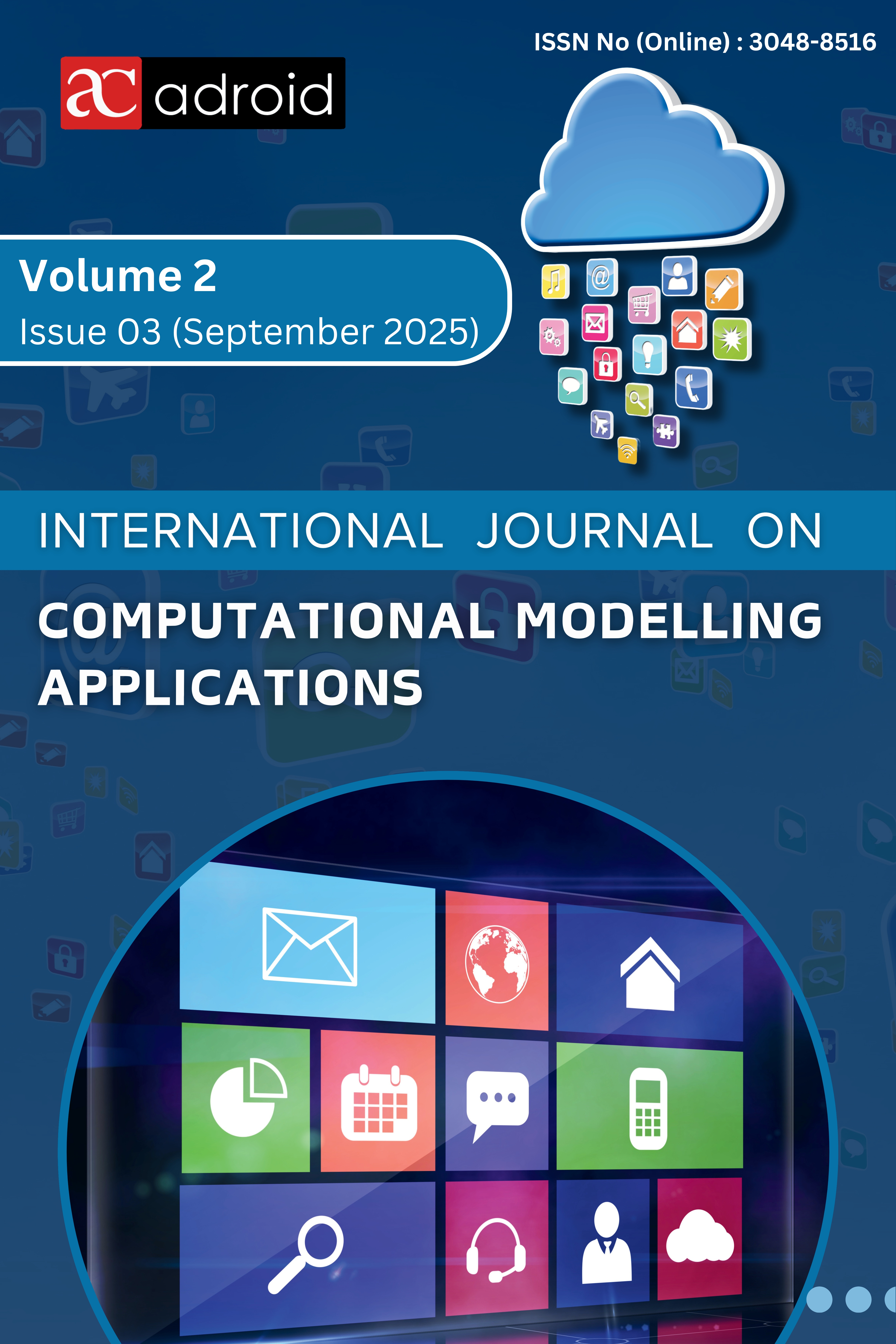Quantum Machine Learning for Drug Discovery: A Systematic Review
DOI:
https://doi.org/10.63503/j.ijcma.2025.156Keywords:
Quantum Machine Learning, Drug Discovery, Molecular Simulation, Molecule Generation, Noisy intermediate-scale Quantum (NISQ)Abstract
Quantum computing plays a significant role in simulating molecules and atoms and offers advantages in chemistry over classical computing. The potential of Quantum Machine Learning (QML) can be used in drug discovery, chemical reaction simulations, and Material design for pharmaceuticals. QML leverages quantum computing and advanced machine learning to accelerate the identification of drug candidates, predict molecular interactions, and optimize compounds. In this paper, we present a systematic review of the methods used for molecular property prediction and molecular generation using quantum machine learning. We have included the recent research, perspective, advantages, and challenges that must be addressed to achieve this task. The objective of this research is not only to discuss current strategies and methods used for drug discovery but also to promote interdisciplinary research in the field of quantum computing and chemistry for wellness.
References
[1] Shor, P. W. Polynomial-Time Algorithms for Prime Factorization and Discrete Logarithms on a Quantum Computer. SIAM Journal on Computing 1997, 26, 1484–1509, arXiv:quant-ph/9508027
[2] Grover, Lov K. "A fast quantum mechanical algorithm for database search." In Proceedings of the twenty-eighth annual ACM symposium on Theory of computing, pp. 212-219. 1996.
[3] R. P. Feynman, Quantum mechanical computers, Opt. News 11, 11 (1985).
[4] Krantz, Philip, Morten Kjaergaard, Fei Yan, Terry P. Orlando, Simon Gustavsson, and William D. Oliver. "A quantum engineer's guide to superconducting qubits." Applied physics reviews 6, no. 2 (2019).
[5] Bruzewicz, Colin D., John Chiaverini, Robert McConnell, and Jeremy M. Sage. "Trapped-ion quantum computing: Progress and challenges." Applied physics reviews 6, no. 2 (2019).
[6] Kok, Pieter, William J. Munro, Kae Nemoto, Timothy C. Ralph, Jonathan P. Dowling, and Gerard J. Milburn. "Linear optical quantum computing with photonic qubits." Reviews of modern physics 79, no. 1 (2007): 135-174.
[7] Graham, T. M., Y. Song, J. Scott, C. Poole, L. Phuttitarn, K. Jooya, P. Eichler et al. "Multi-qubit entanglement and algorithms on a neutral-atom quantum computer." Nature 604, no. 7906 (2022): 457-462.
[8] Hamid, Muhammad, Bashir Alam, and Om Pal. "Comparative Study of Quantum Computing Tools and Frameworks." In International Conference on Innovation and Emerging Trends in Computing and Information Technologies, pp. 87-104. Cham: Springer Nature Switzerland, 2024.
[9] Scott, Oliver B., Jing Gu, and AW Edith Chan. "Classification of protein-binding sites using a spherical convolutional neural network." Journal of Chemical Information and Modeling 62, no. 22 (2022): 5383-5396.
[10] Kawai, Hiroki, and Yuya O. Nakagawa. "Predicting excited states from ground state wavefunction by supervised quantum machine learning." Machine Learning: Science and Technology 1, no. 4 (2020): 045027.
[11] Lourenço, Maicon Pierre, Lizandra Barrios Herrera, Jiří Hostaš, Patrizia Calaminici, Andreas M. Köster, Alain Tchagang, and Dennis R. Salahub. "QMLMaterial─ A Quantum Machine Learning Software for Material Design and Discovery." Journal of chemical theory and computation 19, no. 17 (2023): 5999-6010.
[12] Casares, Pablo Antonio Moreno, Roberto Campos, and Miguel Angel Martin-Delgado. "QFold: quantum walks and deep learning to solve protein folding." Quantum Science and Technology 7, no. 2 (2022): 025013.
[13] Richings, Gareth W., and Scott Habershon. "Predicting molecular photochemistry using machine-learning-enhanced quantum dynamics simulations." Accounts of Chemical Research 55, no. 2 (2022): 209-220.
[14] Jin, W., Barzilay, R., & Jaakkola, T. (2018, July). Junction tree variational autoencoder for molecular graph generation. In International conference on machine learning (pp. 2323-2332). PMLR.
[15] Zitnik, M., Agrawal, M., & Leskovec, J. (2018). Modeling polypharmacy side effects with graph convolutional networks. Bioinformatics, 34(13), i457-i466.
[16] Domingo, L., Chehimi, M., Banerjee, S., Yuxun, S. H., Konakanchi, S., Ogunfowora, L., ... & Johnson, C. (2024, September). A hybrid quantum-classical fusion neural network to improve protein-ligand binding affinity predictions for drug discovery. In 2024 IEEE International Conference on Quantum Computing and Engineering (QCE) (Vol. 2, pp. 126-131). IEEE.
[17] Li, J., Topaloglu, R. O., & Ghosh, S. (2021). Quantum generative models for small molecule drug discovery. IEEE transactions on quantum engineering, 2, 1-8.
[18] Aspuru-Guzik, A., Dutoi, A. D., Love, P. J., & Head-Gordon, M. (2005). Simulated quantum computation of molecular energies. Science, 309(5741), 1704-1707.
[19] Kandala, A., Mezzacapo, A., Temme, K., Takita, M., Brink, M., Chow, J. M., & Gambetta, J. M. (2017). Hardware-efficient variational quantum eigensolver for small molecules and quantum magnets. nature, 549(7671), 242-246.
[20] Bhatia, A. S., Saggi, M. K., & Kais, S. (2023). Quantum machine learning predicting ADME-Tox properties in drug discovery. Journal of Chemical Information and Modeling, 63(21), 6476-6486.
[21] Beaulieu, D., Kornjaca, M., Krunic, Z., Stivaktakis, M., Ehmer, T., Wang, S. T., & Pham, A. (2024). Robust Quantum Reservoir Computing for Molecular Property Prediction. arXiv preprint arXiv:2412.06758.
[22] Chen, R., Liu, X., Jin, S., Lin, J., & Liu, J. (2018). Machine learning for drug-target interaction prediction. Molecules, 23(9), 2208.
[23] Sagingalieva, A., Kordzanganeh, M., Kenbayev, N., Kosichkina, D., Tomashuk, T., & Melnikov, A. (2023). Hybrid quantum neural network for drug response prediction. Cancers, 15(10), 2705.
[24] Gircha, A. I., Boev, A. S., Avchaciov, K., Fedichev, P. O., & Fedorov, A. K. (2023). Hybrid quantum-classical machine learning for generative chemistry and drug design. Scientific Reports, 13(1), 8250.
[25] Li, J.; Alam, M.; Congzhou, M.S.; Wang, J.; Dokholyan, N.V.; Ghosh, S. Drug discovery approaches using quantum machine learning. In Proceedings of the 58th ACM/IEEE Design Automation Conference, San Francisco, CA, USA, 5–9 December 2021; pp. 1356–1359.
[26] Suzuki, T.; Katouda, M. Predicting toxicity by quantum machine learning. J. Phys. Commun. 2020, 4, 125012.

